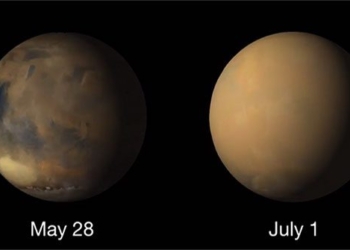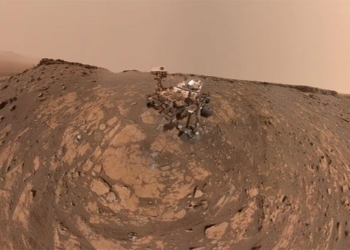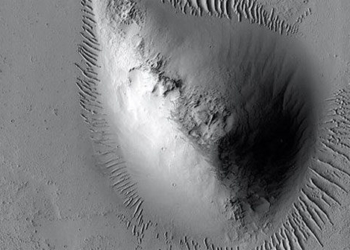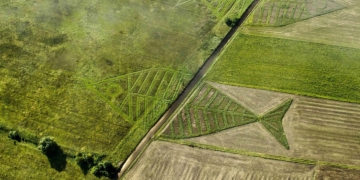With a wingspan of 3.35 meters, this glider can operate continuously for days on the Red Planet.
Currently, NASA scientists have developed a Mars Glider that can fly above the surface of Mars, continuously soaring for days like a “seagull.” When operational, this unmanned glider can be used to collect atmospheric and geological data on Mars. Weighing 5 kg, with a wingspan of up to 3.35 meters, the overall size of this glider is nearly equivalent to that of a seagull.
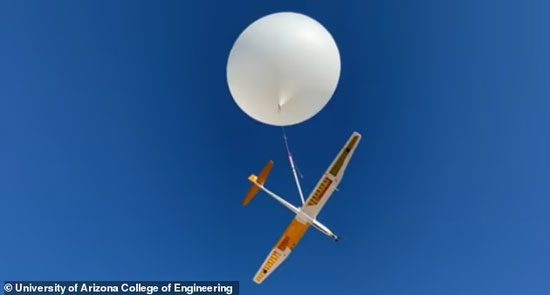
The image shows the test launch of the first version of the glider. During the launch, the glider is attached to a space balloon and eventually lands gently on the ground.
The Mars glider can be lifted to the surface of the Red Planet using space balloons, after which it will unfold its initially folded wings and fly solely using wind energy on this planet. Thanks to advancements in technology and design, this glider can utilize wind energy to navigate around Mars’ geological structures such as canyons and volcanoes.
It is known that the Mars Glider is a prototype developed by NASA’s planetary scientists and aerospace experts at the University of Arizona. They tested this glider in Earth’s desert (simulating the terrain of Mars) to see if using balloons to bring the glider into Earth’s atmosphere was effective, and then adjusted it for operation on Mars.
Dr. Alex Kling, the project lead for the Mars Glider and a research scientist at NASA’s Mars Climate Modeling Center, stated: “Using the Mars glider as a reconnaissance platform is essential; it will provide us with a wealth of important data and ensure crew safety before landing on Mars.”
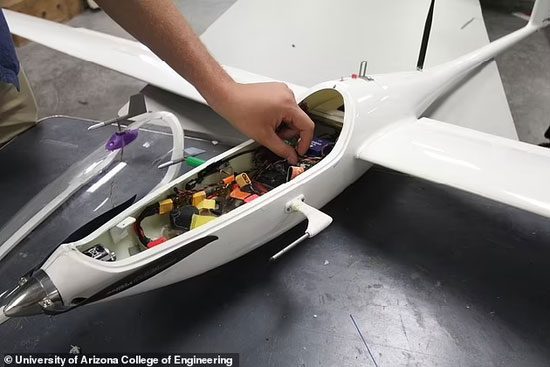
The Mars glider is designed with a range of navigation sensors, as well as cameras, temperature, and gas sensors, to gather information about the atmosphere and terrain of Mars.
Currently, eight Mars orbiters are functioning normally. Additionally, three rovers are traversing the flat sandy surface and mapping small areas of Mars.
However, changes in Mars’ climate and large-scale geological features such as mountains are what scientists are particularly interested in and need to investigate further. In 2021, NASA deployed the “Ingenuity” helicopter on the surface of Mars, designed to explore the Martian environment, but this helicopter can only fly for a maximum of 3 minutes at a time.
According to “Aerospace Magazine,” the Mars glider has the advantage of being able to remain airborne longer and utilize flying sensors, thus better serving research, surveying, and data collection tasks.
Dr. Kling mentioned: “The survey area for the Mars Glider project is the intersection of the surface and atmosphere, which is also where there are many winds and canyons—an area where we previously lacked data.”
Currently, the research team has developed an extensive mathematical model of the glider’s flight patterns based on climate data from Mars. It will employ various flying methods, including simple static flight with sufficient vertical wind or “dynamic” flight.
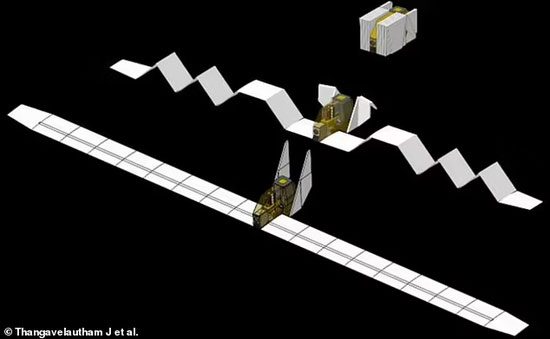
The glider can be released in the Martian atmosphere and spread its wings like origami.
Similar to a seagull on a long flight, dynamic flight utilizes increasing lateral wind speed with terrain elevation to enhance flying efficiency, a phenomenon more common on the Martian surface. Accordingly, the craft will fly in an S-shape, akin to a skier controlling speed while descending a mountain. However, instead of slowing down when the glider changes direction, it accelerates at a slight upward angle.
When the glider encounters faster winds at higher altitudes, it will turn 180 degrees, allowing high-speed winds to push it down at a gentle angle. As it gradually depletes energy, it will continue to fly in an S-shape to harvest energy from the Martian atmosphere.
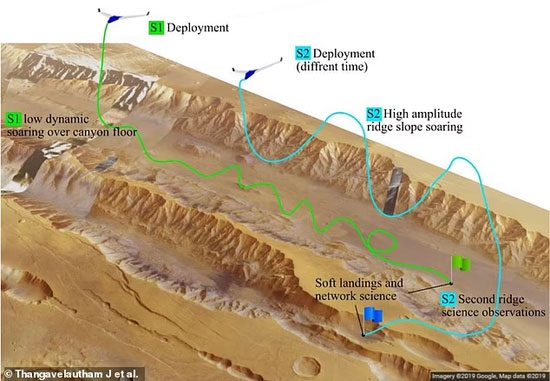
Co-author of the study, Jekan Thanga from the University of Arizona, stated: “That is something people won’t believe until they see it.”
After the glider lands, it will continue transmitting data about the Martian atmosphere to the spacecraft, essentially becoming a weather research station on Mars.
This summer, the Mars Glider prototype flew at an altitude of 4,572 meters on Earth, with testing conducted in the desert, where the thinner atmosphere and flying conditions closely resemble those on Mars.
Professor Sergey Shkarayev, a co-author of the study, remarked: “We can use Earth as a laboratory to study flights on Mars; however, the actual flight trajectory, landing capabilities, and systems still need in-depth research. But we hope that the Mars glider will officially be operational in a few years, not decades.”








































